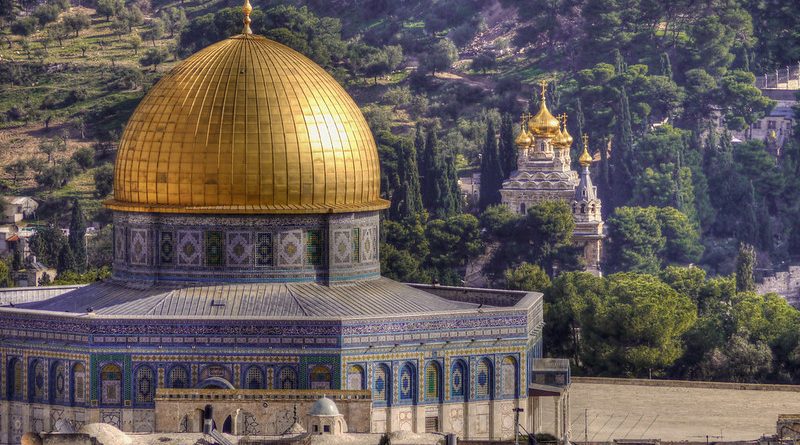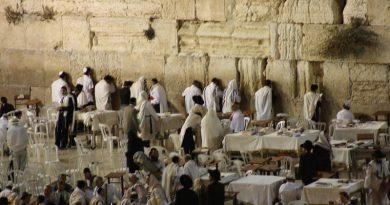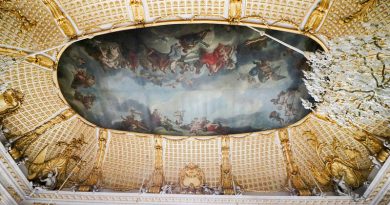Holy of Holies: Dome of the Rock and The Weeping Wall, Jerusalem
History Facts
When: First holy temple constructed in 1000BC
History: Epic battles and spiritual conflicts between the three major religions
Best Enjoyed: For its stunning mosques, and as the site of a unique pilgrimage.
Remember to bring: A hat, modest clothing and a veil to visit all the major mosques and sites
Held sacred by many religious, Jerusalem is probably the most holy city in the world. To the Jews it is Zion, the City of David and Solomon’s temple, and the heartland of the Israelite nation. The Jews call this sacred site in Jerusalem’s Old City Temple Mount after the temple built by Solomon in the 5th century BC to replace Herod’s 10th century constructed temple. Herod’s temple was destroyed by Nebuchadrezzar of Babylon who plundered the temple for the enshrined Ark of the Covenant. They believe the site is where Abraham prepared to sacrifice his son Isaac, and some claim that this is the ‘Holy of Holies’ because when God created the world, light first shone here.
History
Judaism
Around the birth of Christ (0AD), Jerusalem became the subject of a long period of Roman rule, and the temple was enlarged and the Western Wall created. After many battles and wars, with short but brief period of Jewish freedom between, the city was captured in 638AD after the death of Islamic Prophet Muhammed by the Muslim Caliph Umar I who cleansed the Temple Mount and built a mosque for Muslim worship. So this place, so holy to the Jews, is also considered very important place for followers of the Islamic faith, not only in Israel but around the world, because it is the third holy place for Muslims after Mecca and Medina. They call it The Dome of the Rock, and constructed a magnificent Mosque.
Islam
The Dome of the Rock shrine was in the place of the supremely important Christian Church of the Holy Sepulchre, and where had previous stood the Roman Jupiter temple. This magnificent temple not only proclaimed the supremacy of Islam but also ensured followers of Islam would not be tempted by the memory and visions of Christianity. They interpreted the site as being the place of the “Night Journey” written of in the Qu’ran, where Muhammad journeyed from Mecca to Jerusalem then into the heavens on a ladder of gold. It represents the unity and continuity of the Abrahamic faiths – Judaism, Christianity and the Muslim faith and contains early examples of Islamic Art. The dazzling light of the Palestinian days and nights create an amazing, supernatural aura giving rise to the believe that this place is like paradise itself, echoing the words of the Qur’an, “than men of faith will know paradise as their eternal home”. Known in Arabic as Qubbat as-Sakhrah, it is not a mosque of public worship but one of pilgrimage. Islam believes that if a Muslim is able to reach the mosque to pray, it is the equivalent in piety of praying 500 times elsewhere.
The dome itself is made of wood and was later covered in gold, which creates the amazing glitter effect. The dome is set upon a drum, which rests on an octagon, representing the earth. It is constructed harmoniously of proportion and equal parts, a harmony of sight and mood. The stunning glass mosaics and dominant blue colours become lighter in colour as it ascends, representing Muhammad’s ascent to the other world. The roof is made of elaborate scrolls, arabesques and ancient purple mosaics, inscribed throughout its interior with the word of God. The dome symbolises Muhammad’s vision of the celestial vault, showing the colours of light of the Seventh Heaven.
The Dome of the Rock remained a place of worship for both Islam and Jews until around the start of the 2nd Millenium when the Egyptian caliphs destroyed all synagogues and Jewish churches, and shortly afterwards the Seljuk Turks took control of the city and closed Jersualem as a route of Christian pilgrimage, which contributed to the Crusades and the Christian capture of the city. Then in the 12th century, the Dome of the Rock became a Christian shrine and the Church of the Holy Sepulchre was rebuilt. From the 13th to 19th centuries the monument’s control passed from Muslim to Turkish, with the Jews returned en masse throughout these 6 centuries until 1980 when Jerusalem was made capital of Israel.
Wailing Wall
Next to the Dome of the Rock is the Western Wall, otherwise known as the Wailing Wall. It’s called the Wailing Wall because it’s claimed that Jews come here to mourn the destruction of Solomon’s Temple. But they also come here to pray and on Shabbat (the Sabbath) the place is packed with worshippers. The Wall is the only remaining structure of the ancient Temple of Jerusalem created by King Solomon. The wall itself is thought to be the closest point to the temple’s holiest room, the “Holy of the Holies”. The site is a point of fighting between Islam and Judaism over its ownership. Jews come from the world over to pray at the wall and attach messages to it between the cracks. They say you can hear the wall wailing for the loss of their great temple.
Jews attach great importance to having a bar mitzvah at the Wailing Wall, and families travel from around the world to join in the celebration. At thirteen a Jewish boy becomes ‘bar mitzvah’, an adult subject to Jewish law. On the Sabbath after his birthday he reads from the Torah for the first time.
If you visit the wall be prepared for a security check and show piety – bring a hat and modest clothing. No pictures should be taken on the day of the Sabbath.




